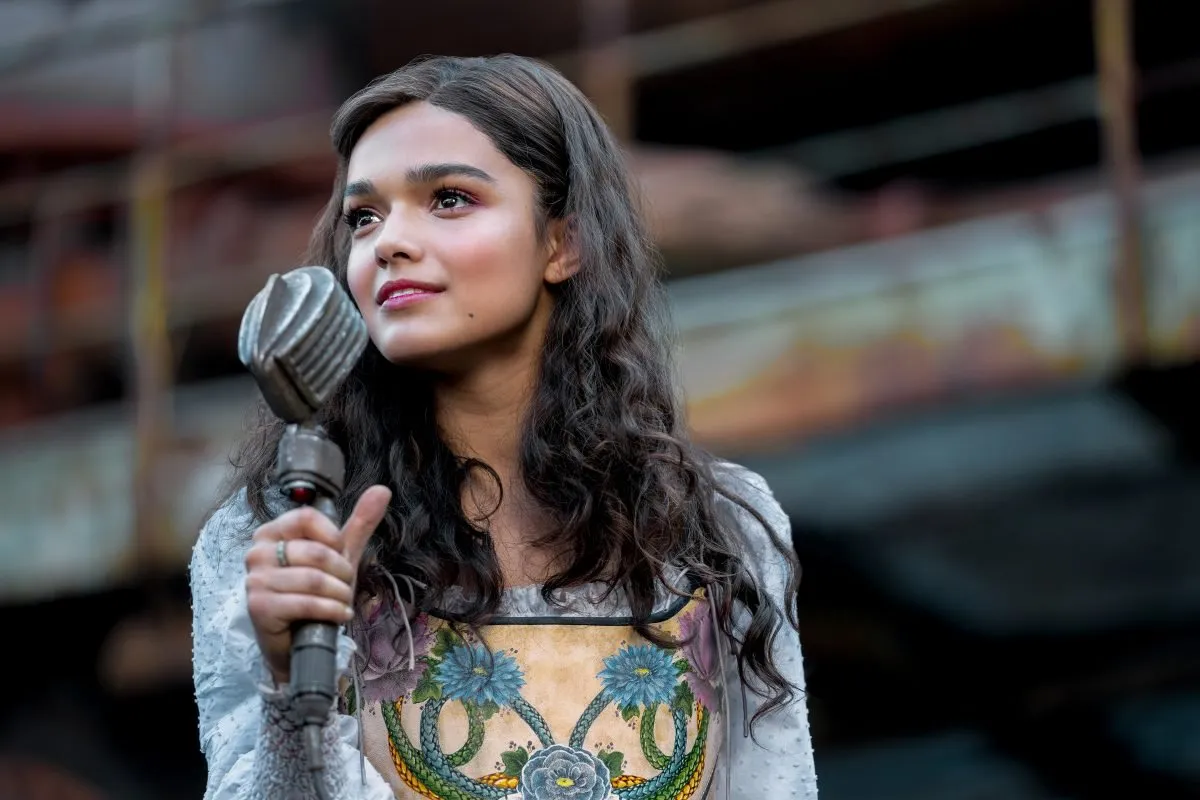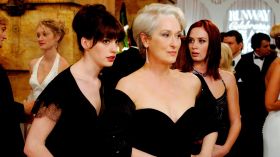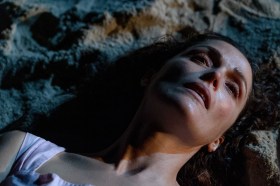‘Are you, are you comin’ to the tree? Where they strung up a man, they say, who murdered three …’
The words of The Hanging Tree, a folk song which became the chorus of rebellion in the original Hunger Games movies, echo throughout the latest entry in the franchise: The Hunger Games: The Ballad of Songbirds and Snakes, a prequel that takes us back to the early days of Panem’s bloody annual spectacle.
This leitmotif, which illicits themes of bearing witness to horrific truths and combating propaganda, aptly echoes the themes of the film, which centres on the young Coriolanus Snow – well before he was the tyrannical President Snow – trying to make things work with his unlikely paramour Lucy Grey Baird, a Hunger Games tribute from District 12, while also rising to power in the hierarchical Capitol and overcoming his family’s poverty.
With compelling and empathetic motives, we see Snow and Baird striving to achieve very different goals by working together – but we know from the outset that ultimately these motives will clash.
The songbird and the snake
Some 64 years before Katniss Everdeen (Jennifer Lawrence) won the Hunger Games in the first film, Coriolanus Snow, played here by British actor Tom Blyth, is 18 years old, rising to the top of his class at the Capitol Academy, and gunning for a significant academic award that will see his currently penniless grandmother and cousin Tigris (Hunter Schafer) pulled out of debt forever.
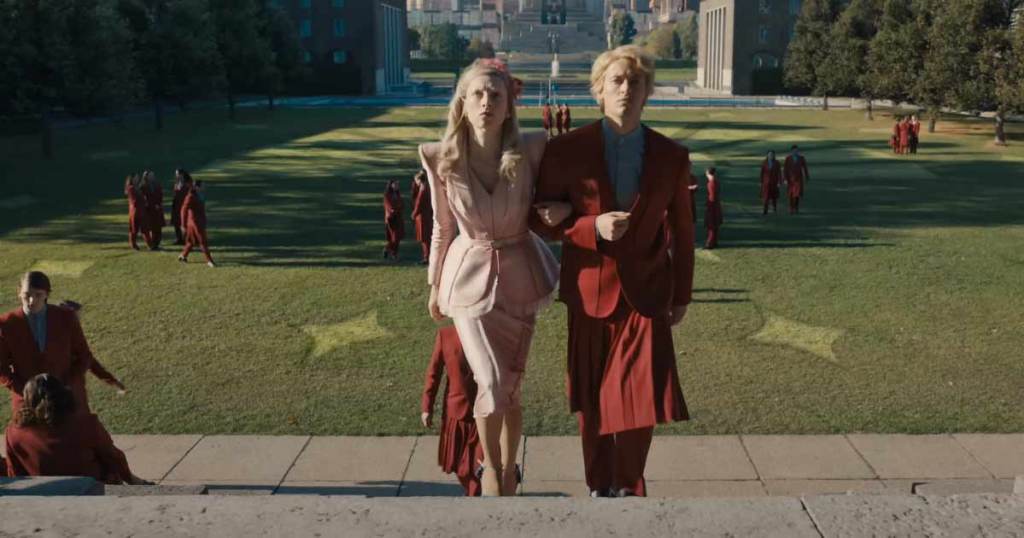
Read: Saltburn review: Fennell’s film is wicked fun
Driven by fear of poverty and a desire to be liked and respected, Snow makes a series of morally dubious choices. But it’s important to note how empathetic his character is: Tom Blyth is excellent in the role, bringing a complexity and depth to Snow that makes one feel that he could ultimately be a ‘good guy’. I think that’s a testament to Blyth’s ability to balance Snow’s kindness with his ferocious rage, which both come from a clearly-telegraphed desire to do the ‘right’ thing.
And then we have the poster girl: Rachel Zegler as Lucy Gray Baird, the travelling singer and tribute from District 12 that is chosen to fight in the 10th Annual Hunger Games.
Zegler is phenomenal in the role, using her vocal prowess (which we previously saw in Speilberg’s West Side Story remake) to invoke an Appalachian folk singer style that’s more than a little like early Dolly Parton.
Her take on the character is as brassy and bold as her singing (which was recorded live on set), and most importantly it is distinct enough to not warrant comparisons to Lawrence’s Katniss Everdeen. Her energy and presence mean that she and Blyth carry the film as equal protagonists, despite Lucy Grey Baird having less screen time.
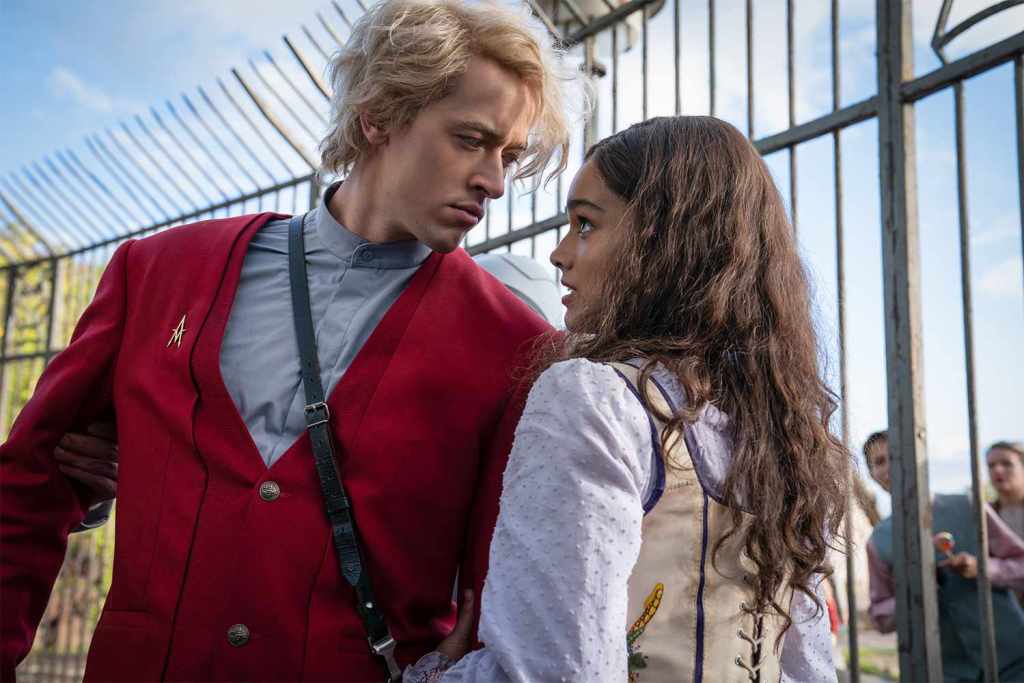
A world before The Hunger Games
Both Zegler and Blyth capture and maintain the audience’s rapt attention, which is no mean feat when such grand set pieces are towering over them. The art direction is fantastic and memorable, with distinct costumes and sets that feel lived-in and familiar to the franchise while also being their own thing.
The art department had their work cut out for them in designing a world some 60 years prior to the original films; in a sense reverse-engineering the societal and cultural evolution of a fictitious place that is still quite heavily based on elements of our world.
What they’ve ended up with is a mashup of 1920s Art Deco and 1950s ‘European Modern’ styles, which in costume looks like drop-waist dresses, pinstripe pants, short vests, tailored blazers, velvet jackets, delicate beads and big buttons; and in sets looks like brutalist architecture, lamp-lit penthouses, geometrically tiled floors, and control rooms filled with round-screen TVs encased in wood.
It’s a visual feast and will no doubt be the envy (and inspiration) of many other young-adult dystopian flicks to come.
Read: Blade Runner Live review: like C-beams near the Tannhäuser Gate
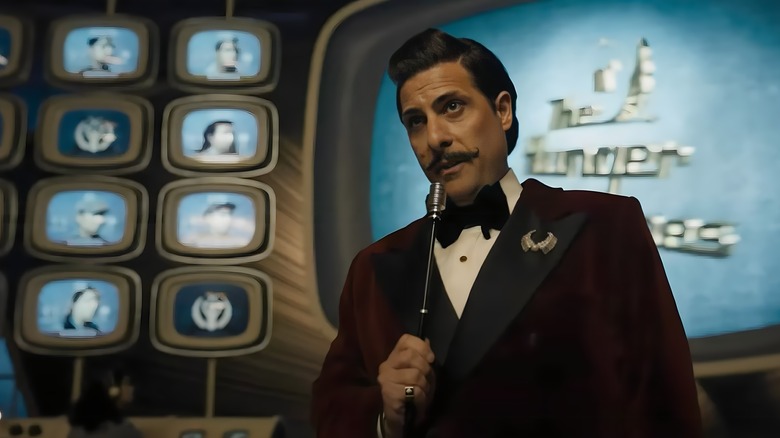
It’s been pointed out before that in a story that so obviously alludes to the US, it’s interesting that the film adaptations tend to go for visual allusions to fascist Germany and Soviet Russia. Perhaps the reasoning is that it would be too on the nose to mimic the visual look of America too much; that the audience will get it anyway, and that comparisons to European fascism and tyranny will be taken as cues to examine their world and its politics further.
But I’ve seen the reactions to the first Hunger Games films and know first-hand that some people will still interpret it in an ‘us = good, them = bad’ manner. This reaction will probably still occur when seeing this film – even though the Panem nation’s flag is comprised of stars, stripes, and an eagle. Oh well.
The who’s-who of Panem
The supporting cast are very much worth mentioning, with Viola Davis doing some excellent character work as the frighteningly mad and ruthless scientist Dr. Volumnia Gaul (the head gamemaker of the Hunger Games), Peter Dinklage in full Game of Thrones mode as the alcoholic and regretful dean of the academy Casca Highbottom, Hunter Schafer as the sympathetic and incredibly fashionable Tigris Snow, and, providing much-needed comic relief, Jason Schwartzman as Lucretius ‘Lucky’ Flickerman, the first ever host of the televised Hunger Games.
Schwartzman plays a believable ancestor of Stanley Tucci’s Caesar Flickerman, exuding oily charm and bulls-eyeing the incredibly dark humour that comes with hosting an event where children murder each another for elite amusement. While the brutal game racks up an increasing death-toll, Flickerman reports the weather with nary a hint of concern. He is just so loveably loathable.
Read: All of Us Strangers review: beautiful and cathartic
Alas, the two-and-half-hour runtime of this epic film is certainly felt, even if the story doesn’t quite overstay its welcome. As I understand it, director Francis Lawrence resisted all temptations to split this one into a two-parter as he did with The Hunger Games: Mockingjay.
I think that was the right decision, even if my arse was a bit numb and my brain was a bit scrambled by the end. But, even with only a passing knowledge of the Hunger Games, I managed to keep up with the twisting narrative and complex character relationships, and ultimately really enjoyed myself.
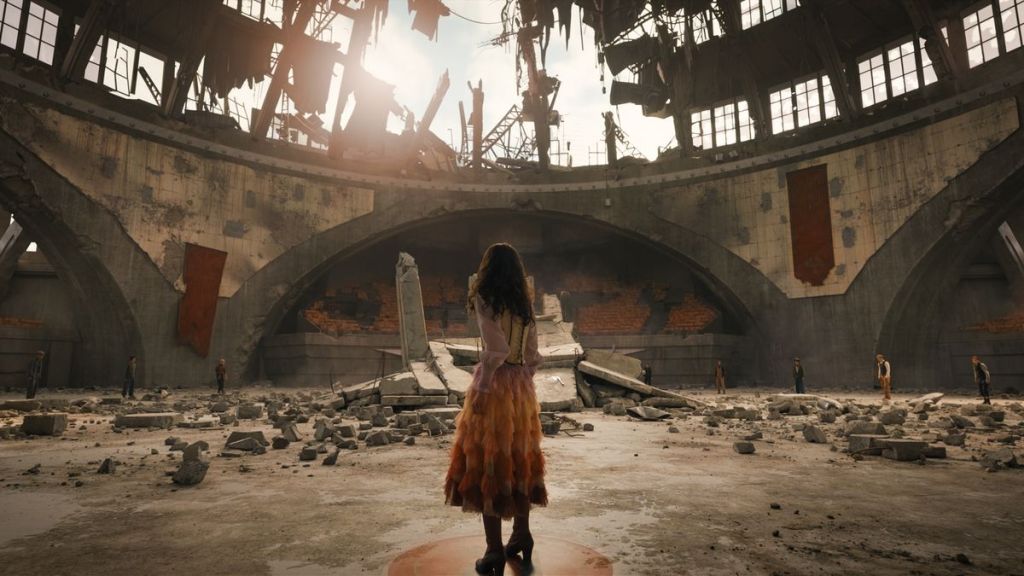
If there’s a point where the story of Panam and the Capitol gets too tired, we haven’t hit it yet. There’s lots of references and nods here for die-hard fans to enjoy, and there’s enough of a self-contained story for newbies to jump into as well.
The Hunger Games: The Ballad of Songbirds and Snakes greatly benefits from author Susan Collins’ clever storytelling, which is faithfully adhered to with only a few minor (and very welcome) changes. Combined with outstanding lead performances and a host of sumptuous visuals, it’s an overall entertaining and worthwhile entry in the massive Hunger Games franchise.
The Hunger Games: The Ballad of Songbirds and Snakes hits cinemas 16 November 2023.
Actors:
Rachel Zegler, Tom Blyth, Jason Schwartzman, Viola Davis, Peter Dinklage, Hunter Schafer
Director:
Format: Movie
Country: USA
Release:
